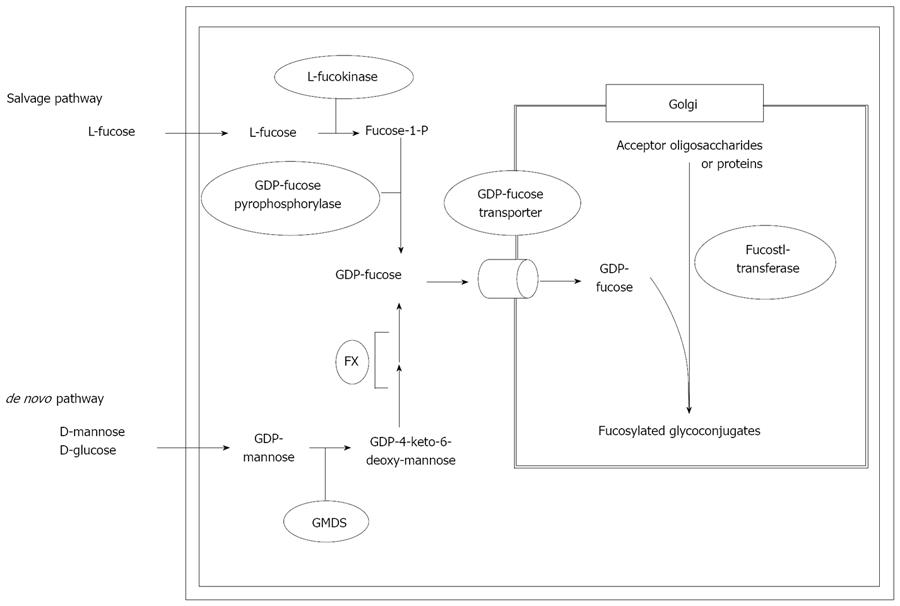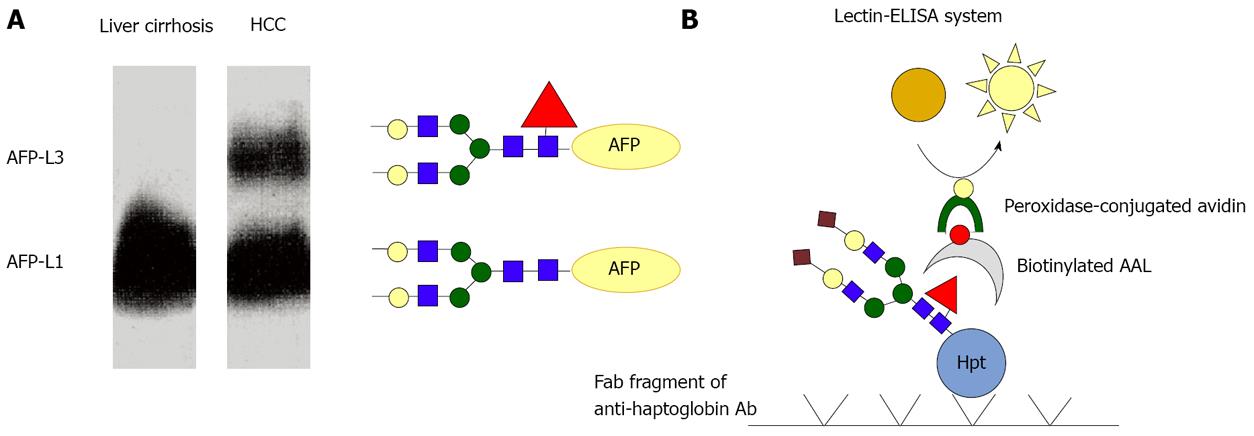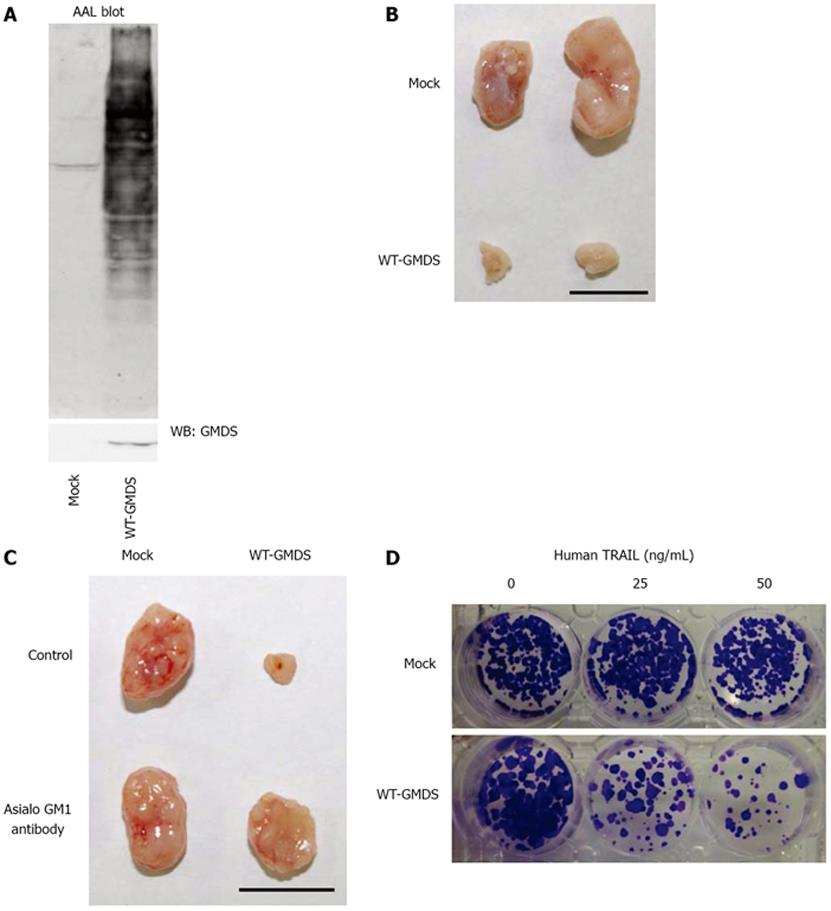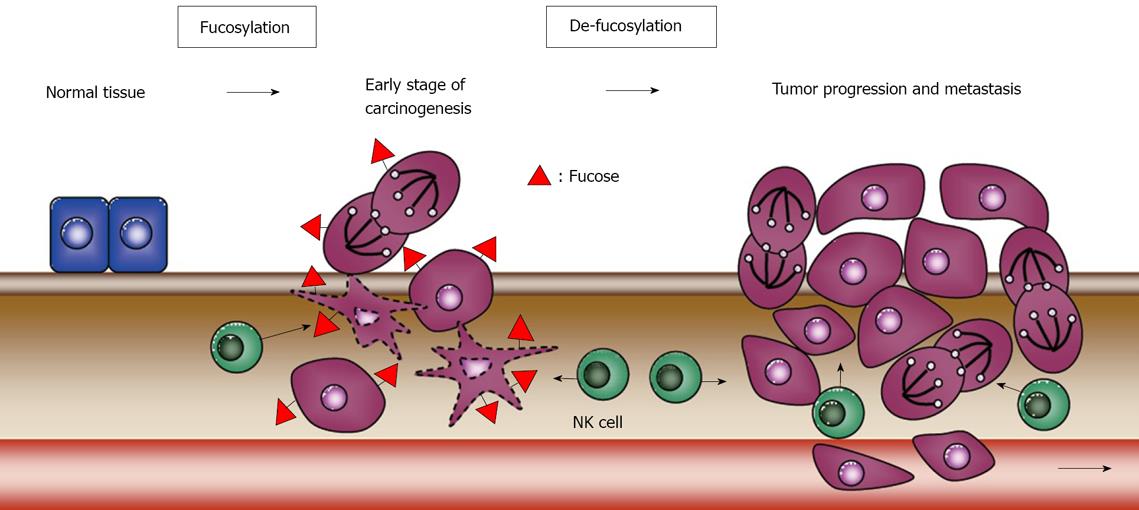Copyright
©2010 Baishideng.
World J Hepatol. Apr 27, 2010; 2(4): 151-161
Published online Apr 27, 2010. doi: 10.4254/wjh.v2.i4.151
Published online Apr 27, 2010. doi: 10.4254/wjh.v2.i4.151
Figure 1 Fucose metabolism.
GDP-fucose is mainly synthesized through the de novo pathway by three reactions catalyzed by GDP-4,6-dehydratase (GMDS) and GDP-4-keto-6-deoxy-mannose-3,5, epimerase-4-reductase (FX). Free L-fucose is converted to GDP-fucose through the salvage pathway, which is a minor pathway. GDP-fucose is subsequently transported from the cytosol to the Golgi lumen by GDP-fucose transporter, and then transferred to acceptor oligosaccharides and proteins by fucosyltransferases.
Figure 2 Measurement of fucosylation-related tumor markers in gastrointestinal cancer.
A: The sera of patients with liver diseases were electrophoresed on an LCA agarose gel, followed by reaction with anti-AFP antibody. Since LCA specifically binds to fucosylated oligosaccharides on AFP, fucosylated AFP runs slowly on an LCA agarose gel; B: Since IgG has a fucosylated oligosaccharide in its Fc portion, a Fab fragment of anti-human haptoglobin IgG was coated on the bottom of a 96-well ELISA plate. After the sera of patients had been loaded into individual wells, the reaction with biotinylated AAL was performed to detect specifically fucosylated haptoglobin. Peroxidase-conjugated avidin and 3,3’,5,5’ tetramethylbenzisine were used for development.
Figure 3 Deficiency of GMDS leads to escape from NK cell-mediated tumor surveillance through modulation of TRAIL signaling[109].
A: After trasnfection of the wild-type GMDS gene into HCT116 cells, Western blot analysis of GMDS and AAL blot analysis were performed. The binding to AAL was restored in transfected cells (WT-GMDS); B: Tumor growth of the GMDS-rescued cells on the backs of athymic nude mice was significantly suppressed compared to mock cells. The bar indicates 10 mm; C: When athymic nude mice were treated with anti-asialo GM1 antibody to deplete NK cells, the tumor growth of the GMDS-rescued cells was accelerated, but not in the case of mock cells. D: The higher susceptibility of the GMDS-rescued cells to TRAIL was confirmed by clonogenic survival assays. These figures are modified from the data in reference 109.
Figure 4 Schematic model of the biological function of fucosylation and de-fucosylation in modulating immune surveillance during colon carcinogenesis[109].
The level of fucosylation is not high in normal colon tissues, but is increased at an early stage in colon cancer. The cancer cells represented by the dotted line are apoptotic ones, which are attacked by NK cells. In certain types of advanced cancer, de-fucosylation through genetic mutation leads to escape from NK cell-mediated tumor surveillance and the acquisition of more malignant characteristics. This figure is modified from the data in reference 109.
- Citation: Moriwaki K, Miyoshi E. Fucosylation and gastrointestinal cancer. World J Hepatol 2010; 2(4): 151-161
- URL: https://www.wjgnet.com/1948-5182/full/v2/i4/151.htm
- DOI: https://dx.doi.org/10.4254/wjh.v2.i4.151












